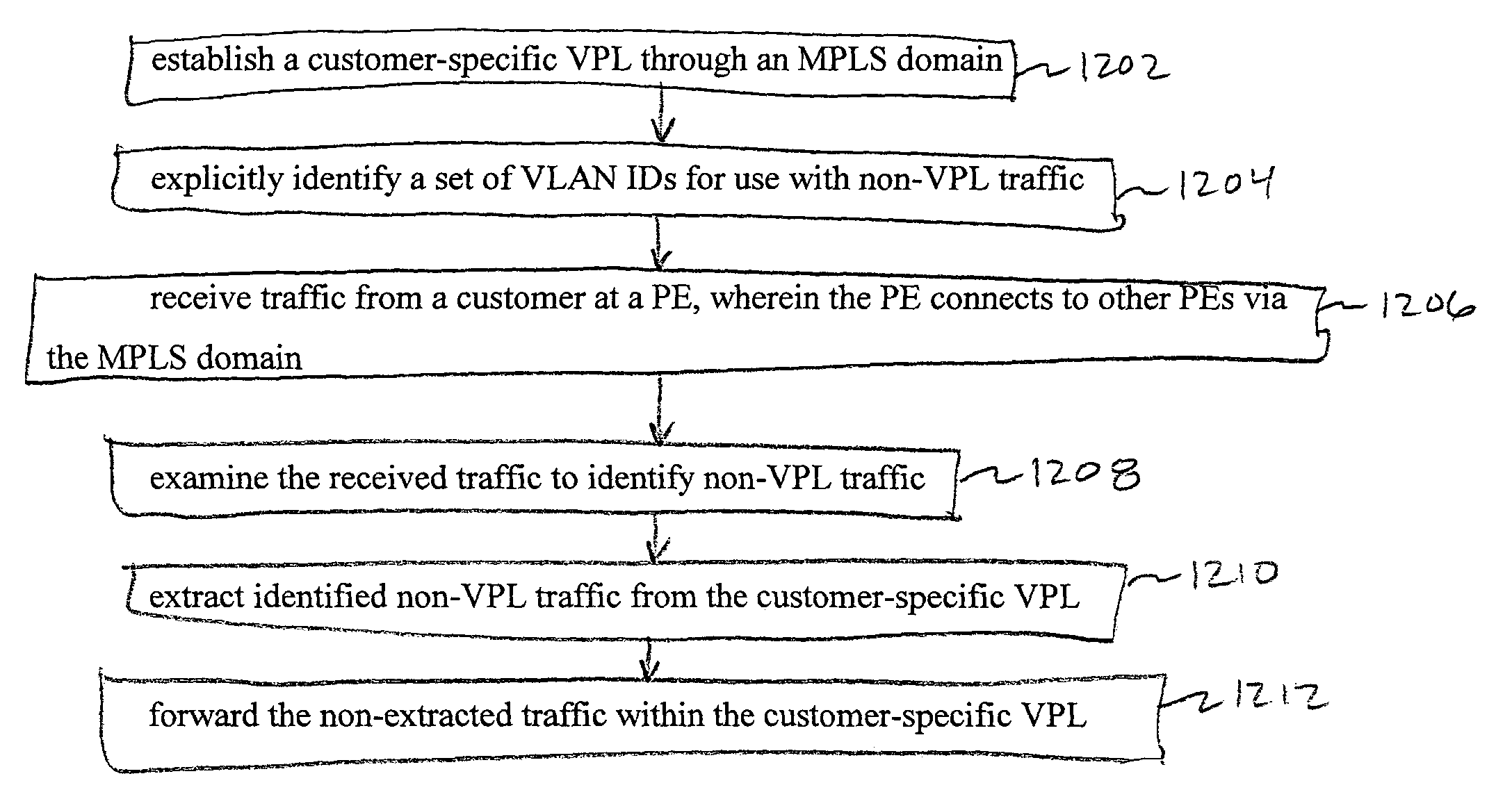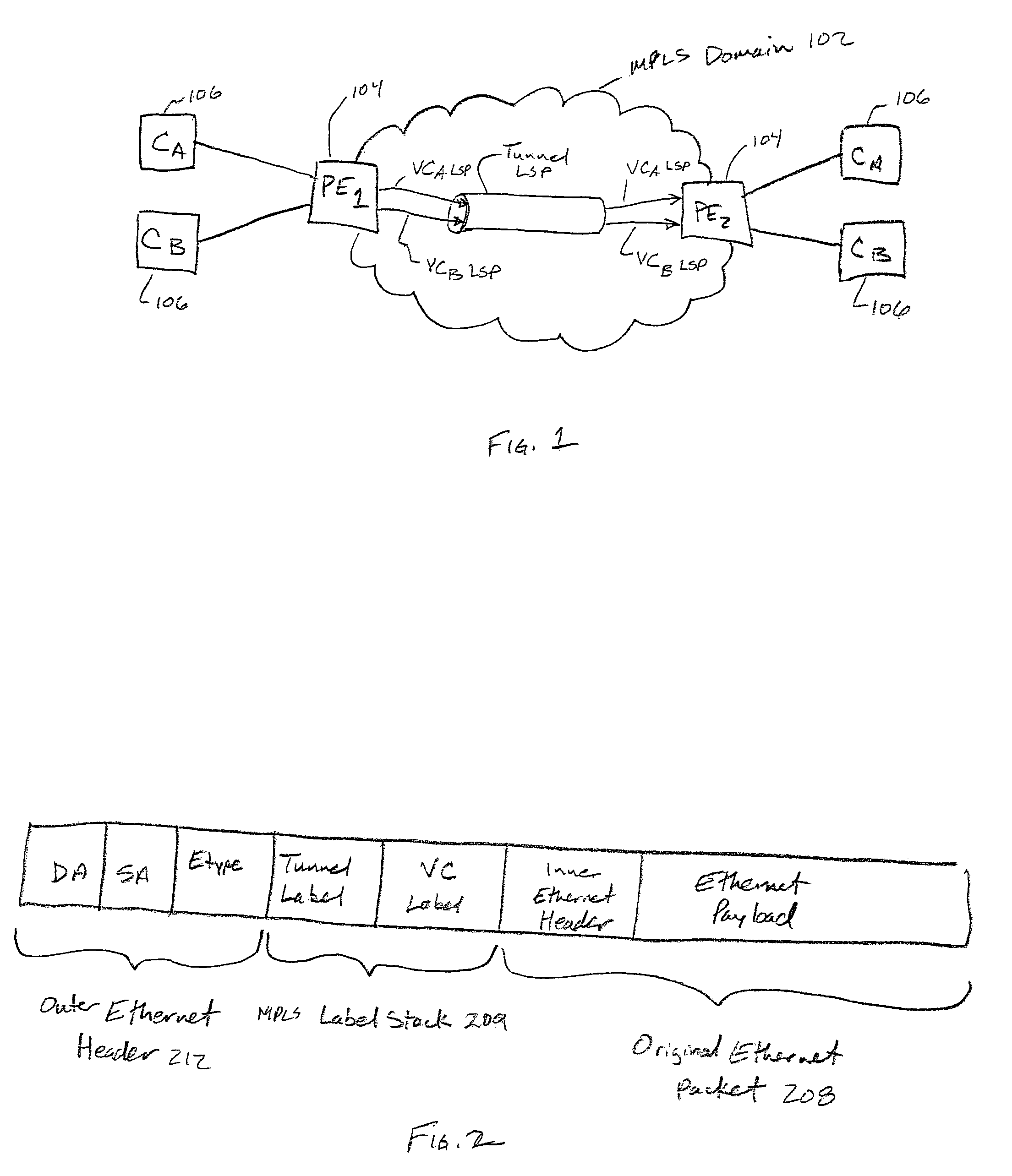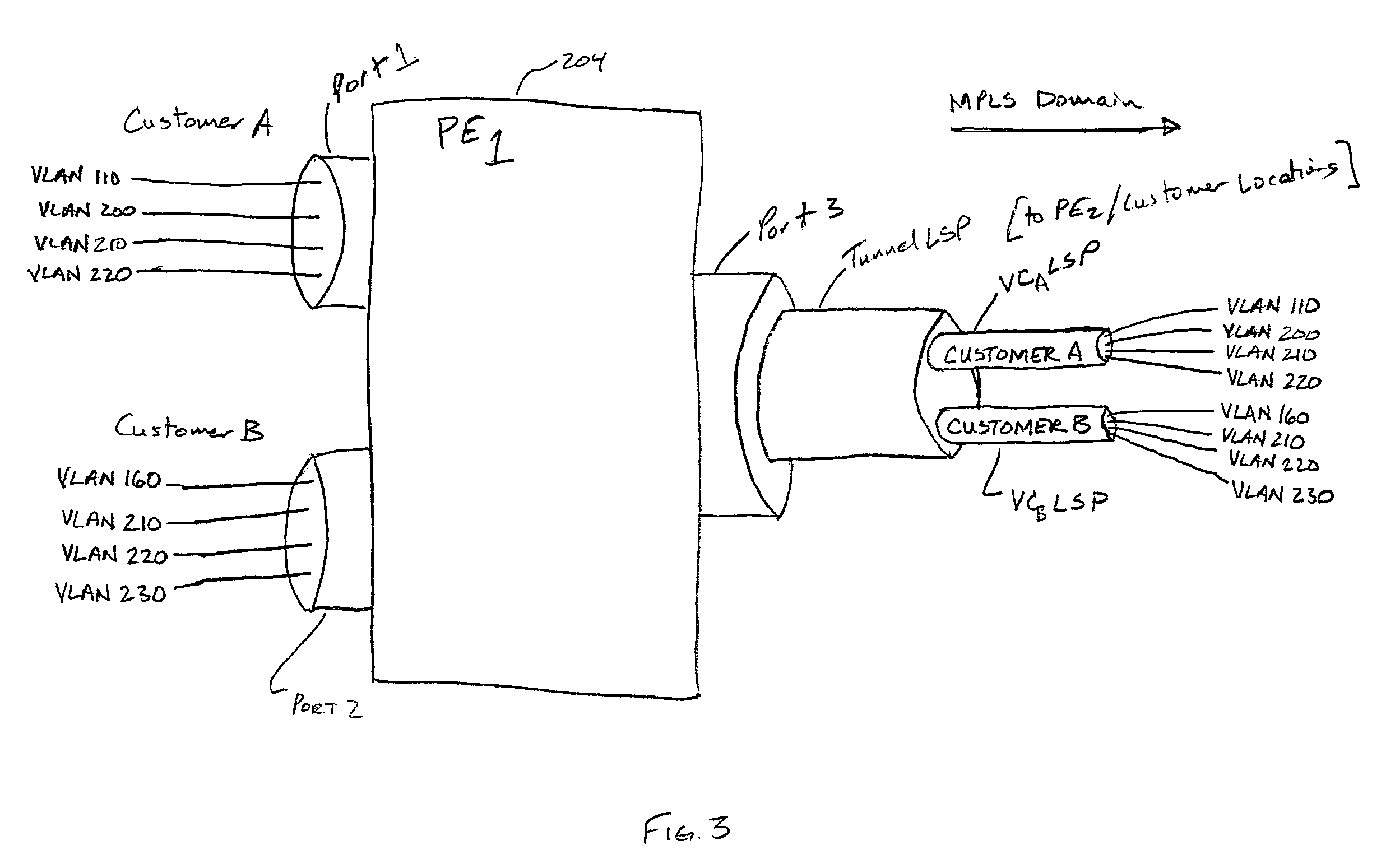Multiprotocol label switching (MPLS) edge service extraction
a multi-protocol label and edge service technology, applied in the field of network traffic management, can solve the problems of insufficient address of other network services, customer demand for lan services from service providers, and current vpls technologies, etc., and achieve the effect of flexible and efficient network managemen
- Summary
- Abstract
- Description
- Claims
- Application Information
AI Technical Summary
Benefits of technology
Problems solved by technology
Method used
Image
Examples
Embodiment Construction
[0026]FIG. 5 depicts a service provider MPLS domain 502 that connects multiple geographically diverse customer locations 506 to each other and to an additional network 514, such as the Internet via PEs 504. In accordance with the invention, the customers (e.g., customers A and B) have access to virtual private LAN (VPL) and Internet services through the PEs and the MPLS domain. Providing VPL services and additional network services involves establishing different tunnel LSPs between the PEs for the VPL services and the additional services as is described in the above-identified IETF draft standards. Throughout the description, network services and traffic that are not part of the VPL services are referred to as “non-VPL” services or “non-VPL” traffic. Non-VPL services may include, for example, access to the Internet, a video on demand (VoD) network, a publicly switched telephone network (PSTN), or some other specialty network. Referring to the example of FIG. 5, the non-VPL services...
PUM
 Login to View More
Login to View More Abstract
Description
Claims
Application Information
 Login to View More
Login to View More - R&D
- Intellectual Property
- Life Sciences
- Materials
- Tech Scout
- Unparalleled Data Quality
- Higher Quality Content
- 60% Fewer Hallucinations
Browse by: Latest US Patents, China's latest patents, Technical Efficacy Thesaurus, Application Domain, Technology Topic, Popular Technical Reports.
© 2025 PatSnap. All rights reserved.Legal|Privacy policy|Modern Slavery Act Transparency Statement|Sitemap|About US| Contact US: help@patsnap.com



